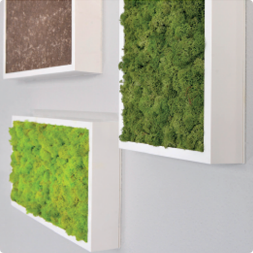How Too Much Light Affects Your Plants
Plants need light. It’s a simple statement, and it’s true. But it’s actually a bit more complicated than that. While light is necessary to create the energy needed to bloom and blossom, light requirements go beyond a yes/no option. Just as a lack of light will hurt your plant, so will getting too much of it.
And “too much light” has different designations as well. Too much light can refer to the amount of light a plant gets, as in the duration of light exposure. Several hours of consistent light can be bad for certain plants, and can actually inhibit their growth. Plants require periods of both light and darkness to keep their metabolism and blooming phases in balance, and when they get too much light, those patterns are disrupted. While some plants need less darkness time than others, too much light will impede any growth schedule over time.
Too much light can also refer to the intensity of the light. Intense, direct light is great for some plants, but it will damage (or even kill others). The plant isn’t able to convert all of the light into consumable energy, and the excess creates a heat issue over time. The plant might use available water to cool itself, which creates a moisture shortage as well. The soil dries, and the plant suffers from both excess heat and dehydration.
Causes
Plants receive too much light for various reasons, and a little education can help plant parents avoid putting them in dangerous situations. In many cases, the excess light is unintentional. People are simply unaware of a specific plant’s needs and place it in the wrong area of a living space. Whether a plant needs direct or indirect light, or minimal exposure as opposed to a more consistent routine, knowing what conditions encourage healthy growth is key to keeping your plant alive and thriving.
In other situations, misinformation or poor decisions can contribute to excess light exposure. Putting a plant in direct or extended light in order to encourage a growth spurt will often have the opposite effect, and damage your plant. Standard LED lights do not offer the same benefits for plants as they do for people, and do not spur the same growth habits as other light. And while using a grow light can be beneficial, they can also burn plants if they’re used improperly or placed too close to them. In an attempt to use extra light to help a plant and keep it healthy, these examples can cause a great deal of harm instead.
It’s also important to know the consequences of failing to meet a plant’s light requirements, and what happens if they get too much. In some cases, they simply won’t grow as fast as their cycle is disrupted. But in many others, they might suffer serious damage or die. Each plant’s sensitivity to low, moderate, or bright light should be considered, with care taken to make sure they’re placed in an environment that can meet their needs.
Signs of Too Much Light
Fortunately, your plant will let you know when it’s getting too much light, and often there’s enough time to correct the problem.
The parts of the plant exposed to the excess light will show physical symptoms. You might see the leaves droop before changes in color appear. Then pale or brown spots, or yellowing leaves can occur, even as the veins remain green and looking healthy. Dry patches and a browning of the tips of the leaves might become prominent as well. Wilting is common in younger specimens, and many plants curl downward as the exposure continues, as well as a reduction in growth. Even if you don’t monitor your plant every day, you’ll notice these signs over time.
Solutions
The obvious solution is to take your plant out of the dangerous environment, but there’s more to it than that. It’s important to be mindful of light changes in a room as the seasons change. Light can become more intense from certain windows at different times of the year, meaning a formerly-safe place for a plant might become harmful. The plant needs to be in an area where its light needs are met, but still safe from getting too much, and that might mean moving it to a different part of the room, or a different room entirely. The specific type of plant and the layout of your home will determine the best course of action.
Finally, you can avoid overexposing your plant by simply knowing what it needs before a problem arises. When you choose a new plant for your home, know what type of light it needs, and give it the right spot from the beginning. And if you have a place in your home that could really use a beautiful plant, you can choose one that fits the lighting that already exists. Whether you choose a spot based on the plant, or vice-versa, knowing what’s required will avoid problems later and possibly save the plant itself.
Further Assistance
You aren’t expected to have all the answers. Fortunately, you know the people who do. For decades, the experts at PLANTZ have been matching the right plant with the people who love them. Whether you need advice on keeping a specific plant healthy, or you want some guidance on how to spruce up a specific part of your home, we can help. Just use our contact page to begin the conversation.


















